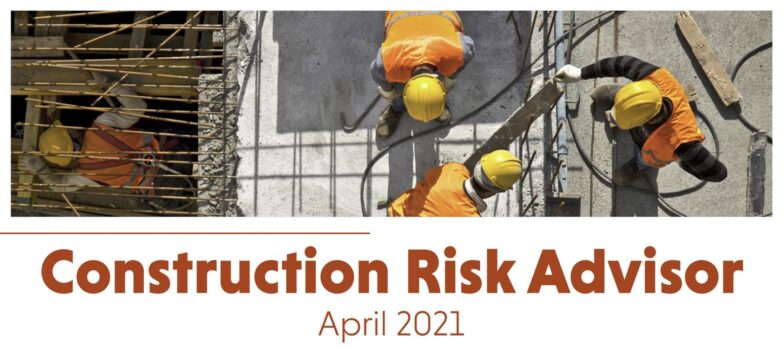02 Apr Construction Risk Advisor – April 2021
[wpseo_breadcrumb]
As the winter season—and the frigid conditions that accompany it—officially concludes, construction employers like you can start preparing for spring projects. Nevertheless, spring weather comes with its own set of risks. After all, this season is often the most difficult to navigate in the scope of working outdoors. Between fluctuating temperatures, frequent rain showers, fog, heavy winds and lightning concerns, it’s important to be aware of spring-related hazards and how to best protect your workforce from these seasonal issues. As such, consider these worksite safety considerations for spring:


 Construction Site Safety Considerations for Spring
Construction Site Safety Considerations for Spring Since March 2020, the Federal Motor Carrier Safety Administration (FMCSA) has provided emergency exemptions and waivers for regulations to support COVID-19 emergency relief efforts.
Since March 2020, the Federal Motor Carrier Safety Administration (FMCSA) has provided emergency exemptions and waivers for regulations to support COVID-19 emergency relief efforts. The COVID-19 pandemic continues to bring forth a variety of questions for businesses. Employers can take a number of preventive steps to help keep employees safe, but they should also prepare to respond to various situations that can occur in the workplace.
The COVID-19 pandemic continues to bring forth a variety of questions for businesses. Employers can take a number of preventive steps to help keep employees safe, but they should also prepare to respond to various situations that can occur in the workplace. The National Safety Council (NSC) has released preliminary data showing vehicle fatalities in 2020 increased by 24% compared to 2007 and 8% compared to 2019.
The National Safety Council (NSC) has released preliminary data showing vehicle fatalities in 2020 increased by 24% compared to 2007 and 8% compared to 2019. Ransomware attacks—which entail a cybercriminal deploying malicious software to compromise a device (or multiple devices) and demand a large payment be made before restoring the technology for the victim—have become a significant concern for organizations across industry lines.
Ransomware attacks—which entail a cybercriminal deploying malicious software to compromise a device (or multiple devices) and demand a large payment be made before restoring the technology for the victim—have become a significant concern for organizations across industry lines.